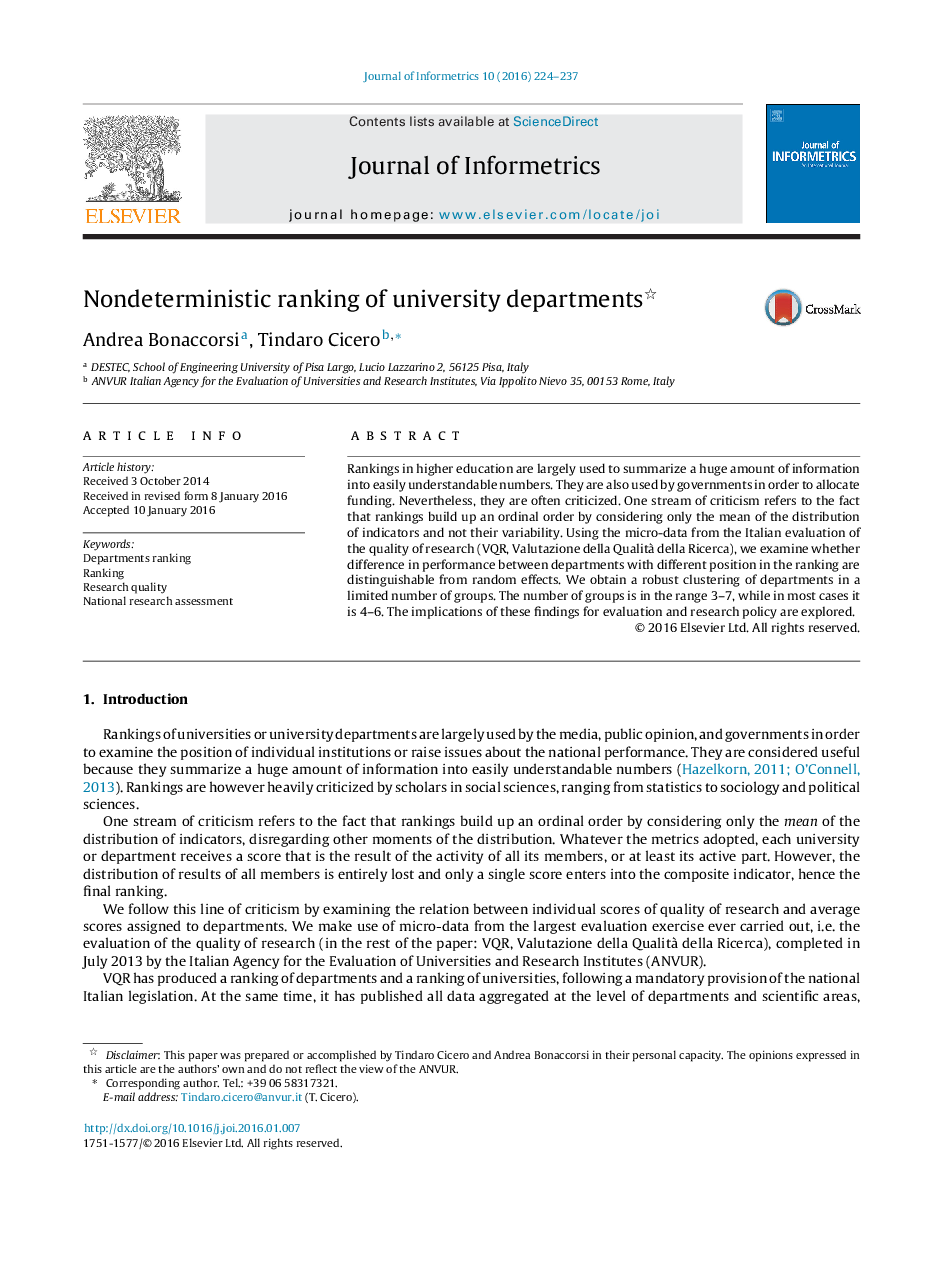| Article ID | Journal | Published Year | Pages | File Type |
|---|---|---|---|---|
| 10358345 | Journal of Informetrics | 2016 | 14 Pages |
Abstract
Rankings in higher education are largely used to summarize a huge amount of information into easily understandable numbers. They are also used by governments in order to allocate funding. Nevertheless, they are often criticized. One stream of criticism refers to the fact that rankings build up an ordinal order by considering only the mean of the distribution of indicators and not their variability. Using the micro-data from the Italian evaluation of the quality of research (VQR, Valutazione della Qualità della Ricerca), we examine whether difference in performance between departments with different position in the ranking are distinguishable from random effects. We obtain a robust clustering of departments in a limited number of groups. The number of groups is in the range 3-7, while in most cases it is 4-6. The implications of these findings for evaluation and research policy are explored.
Keywords
Related Topics
Physical Sciences and Engineering
Computer Science
Computer Science Applications
Authors
Andrea Bonaccorsi, Tindaro Cicero,
